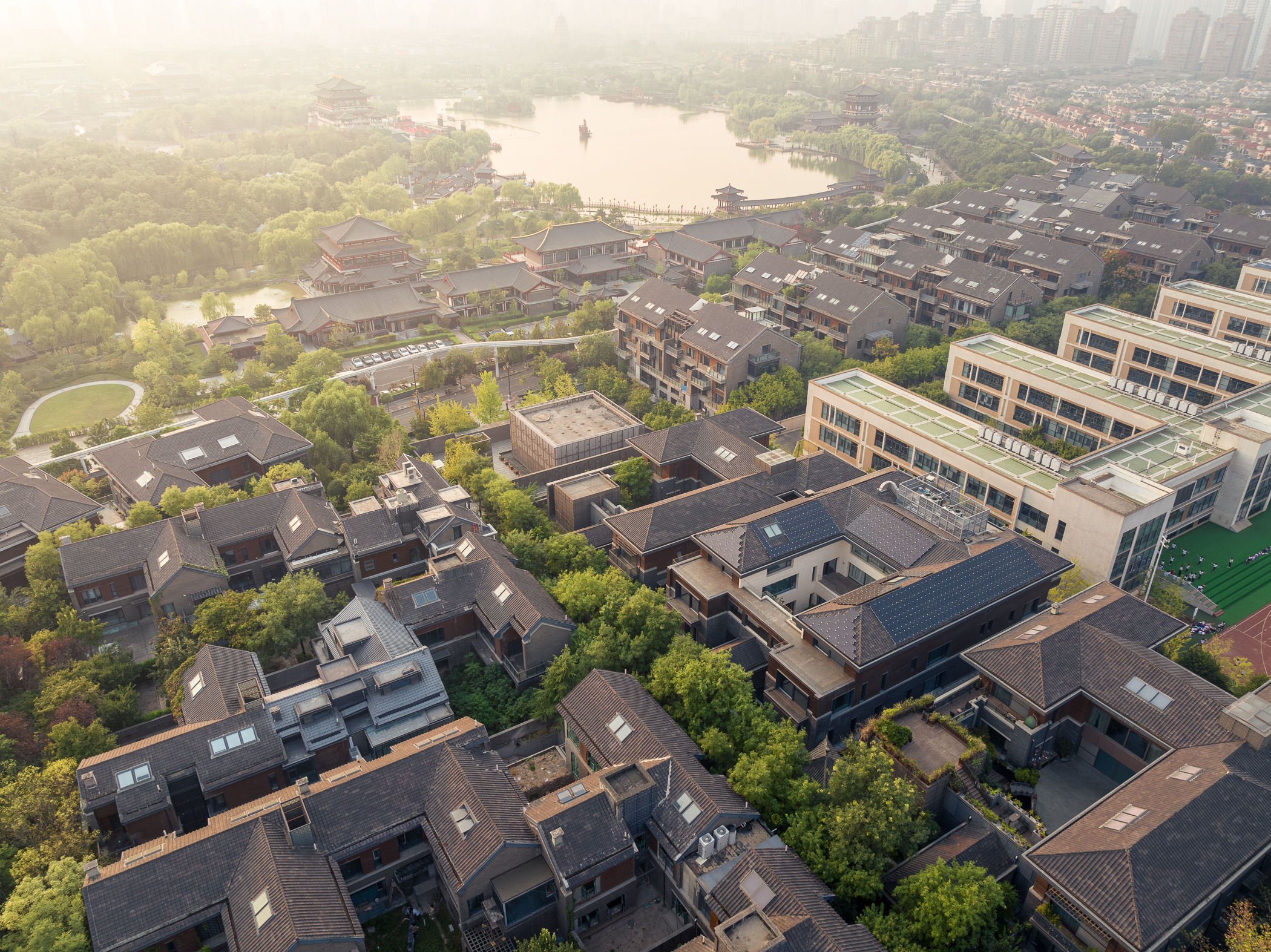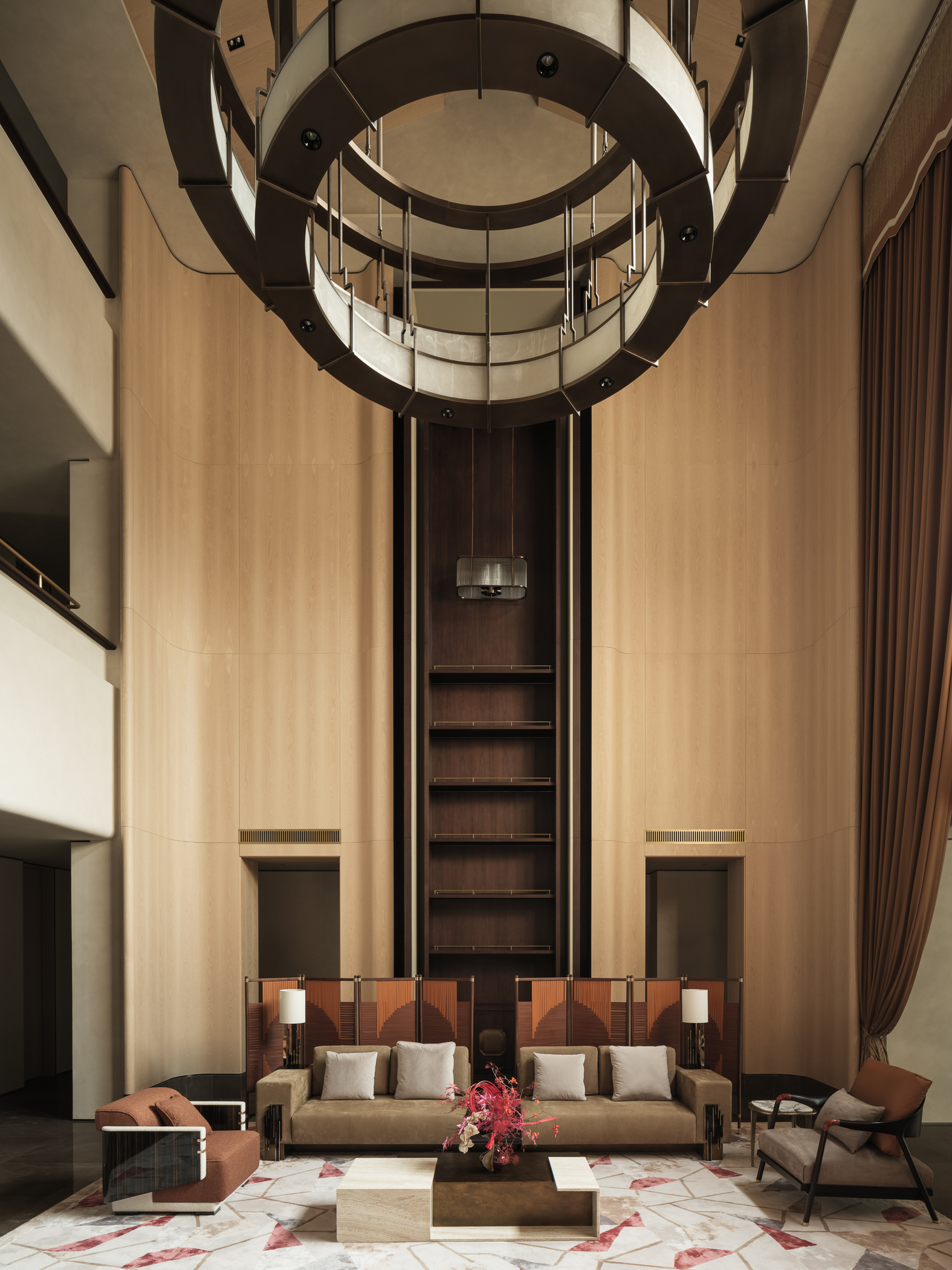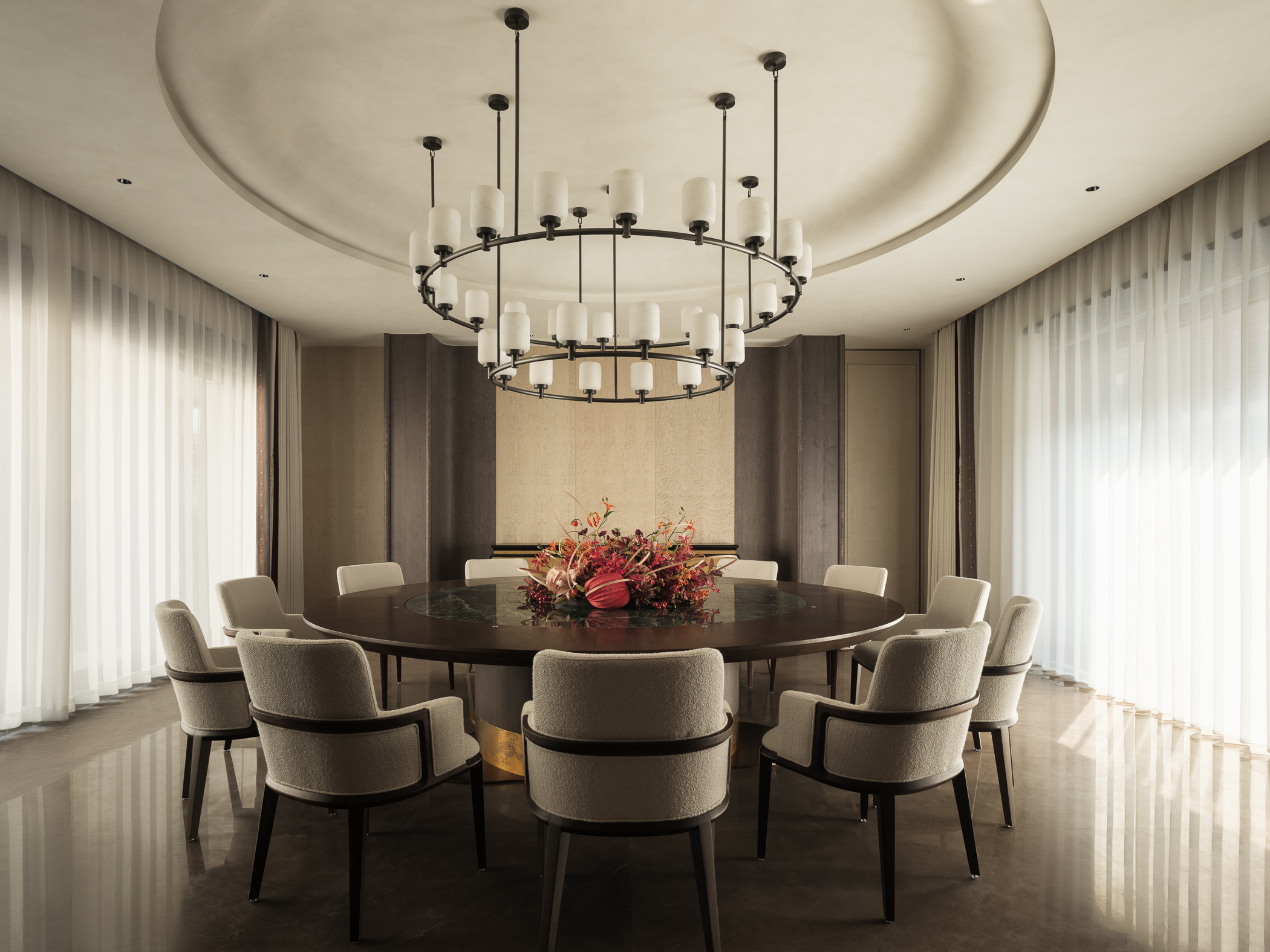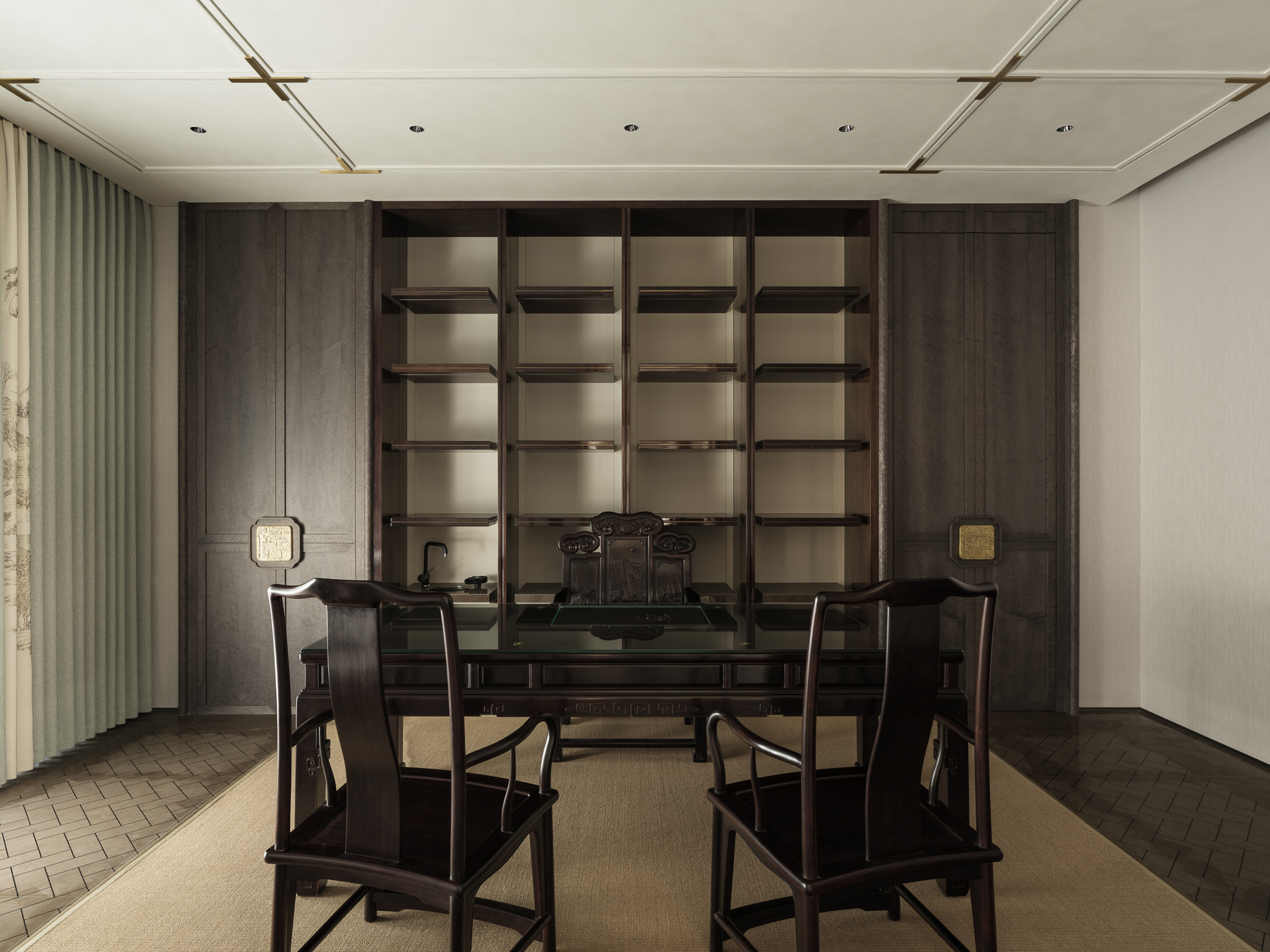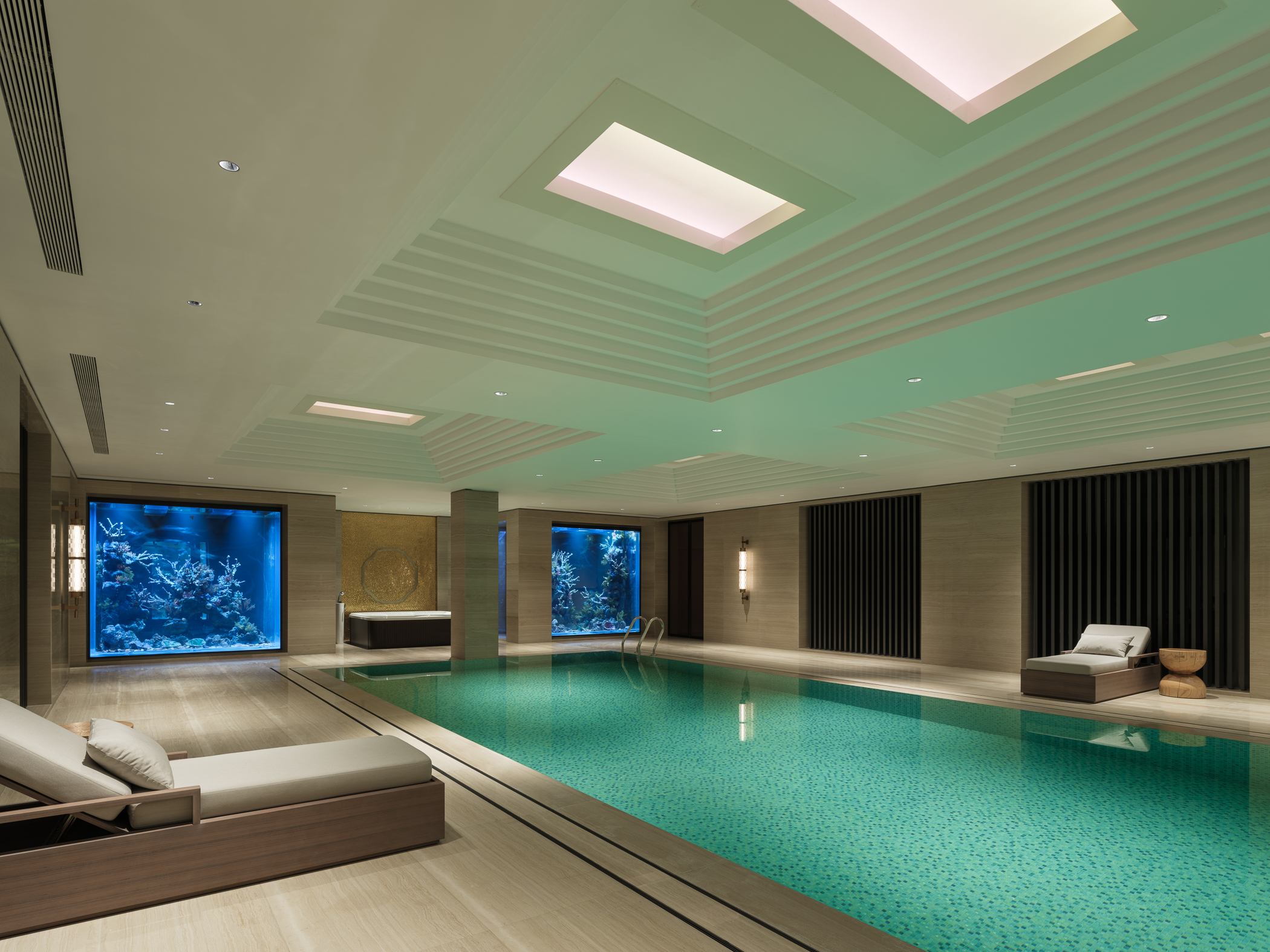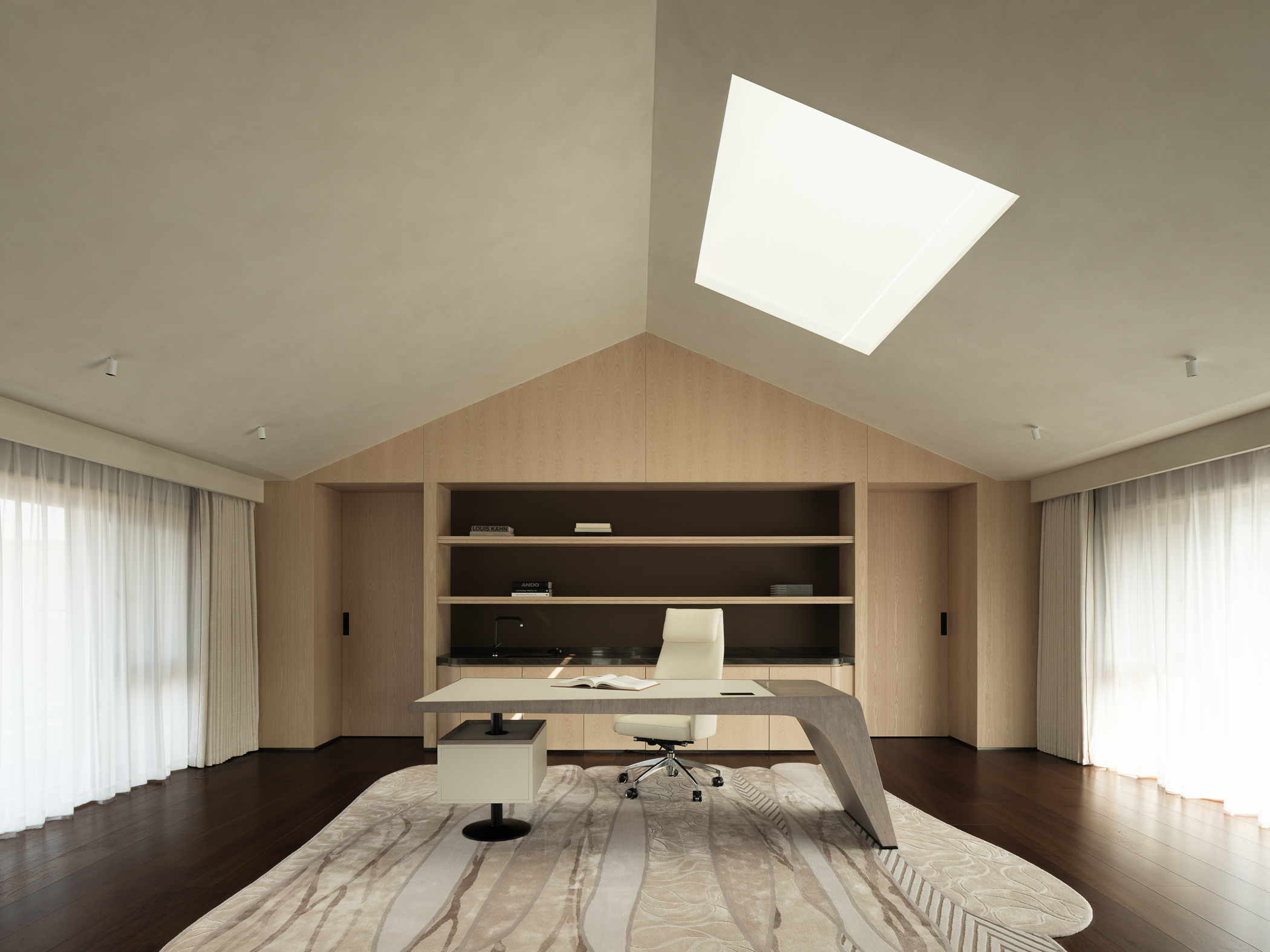SHORT DESCRIPTION
Located in Xi’an’s Qujiang core area, this project sits in the Furong Lake villa district, the last villa plot in the zone and a highly valuable site. As China’s first residential Active House (AH)-certified project, it has been in stable operation for nearly a year, with an annual energy consumption of only 72 kWh/m²—just one-fifth of the national standard for large villas. The building adopts a “Hui”-shaped layout, with the atrium connected to the reception hall. Natural ventilation is achieved through the chimney effect, while terraces and sky gardens bring greenery indoors. The 3,600-sqm villa has 26 sensors ( monitor CO2, PM2.5, humidity, temperature, light, rain, wind, etc.) , with data displayed at the interaction center, making the building “speak.” Family interaction zones are placed on each level, while the basement houses a pool, gym, and golf area for recreation. All three above-ground floors enjoy natural daylight. Operable windows and skylights extend the ventilation season, improving comfort while reducing energy use. Fresh-air systems provide 85 m³/h per person, ensuring a healthy indoor climate. Light-toned wood finishes, coatings, and soft furnishings create a relaxing atmosphere. Landscaped courtyards and gardens frame views from every space, enriching the living experience. The roof is equipped with 569 photovoltaic panels, generating about 69,121 kWh annually. LED, skylight, and membrane lights meet diverse needs while accounting for only 3% of total energy use. Large system windows maximize natural light and airflow, further lowering demand on mechanical systems. Eco-friendly and recyclable materials are prioritized, with big-data and SaaS tools preventing renovation pollution. Construction also minimized environmental impact. With innovations in layout, energy use, and environmental control, the project delivers a sustainable, low-energy, and healthy residential model.

